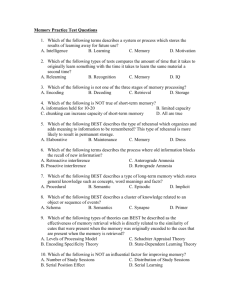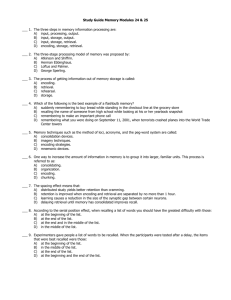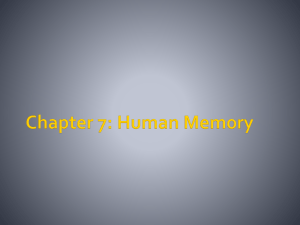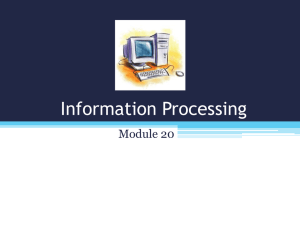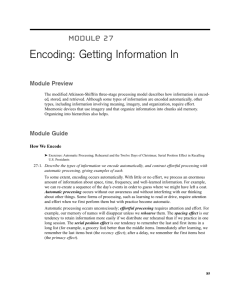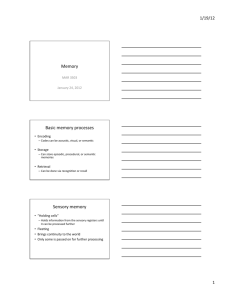Cognitive Intervention Strategies: Guide & Principles
advertisement
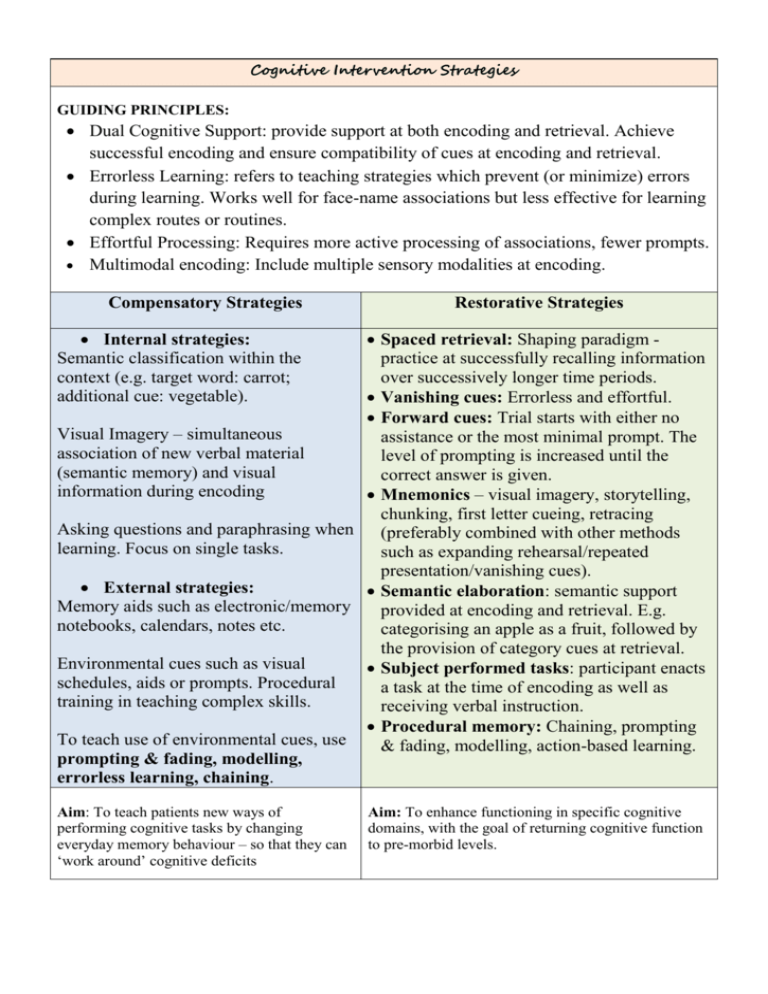
Cognitive Intervention Strategies GUIDING PRINCIPLES: Dual Cognitive Support: provide support at both encoding and retrieval. Achieve successful encoding and ensure compatibility of cues at encoding and retrieval. Errorless Learning: refers to teaching strategies which prevent (or minimize) errors during learning. Works well for face-name associations but less effective for learning complex routes or routines. Effortful Processing: Requires more active processing of associations, fewer prompts. Multimodal encoding: Include multiple sensory modalities at encoding. Compensatory Strategies Restorative Strategies Spaced retrieval: Shaping paradigm practice at successfully recalling information over successively longer time periods. Vanishing cues: Errorless and effortful. Forward cues: Trial starts with either no Visual Imagery – simultaneous assistance or the most minimal prompt. The association of new verbal material level of prompting is increased until the (semantic memory) and visual correct answer is given. information during encoding Mnemonics – visual imagery, storytelling, chunking, first letter cueing, retracing Asking questions and paraphrasing when (preferably combined with other methods learning. Focus on single tasks. such as expanding rehearsal/repeated presentation/vanishing cues). External strategies: Semantic elaboration: semantic support Memory aids such as electronic/memory provided at encoding and retrieval. E.g. notebooks, calendars, notes etc. categorising an apple as a fruit, followed by the provision of category cues at retrieval. Environmental cues such as visual Subject performed tasks: participant enacts schedules, aids or prompts. Procedural a task at the time of encoding as well as training in teaching complex skills. receiving verbal instruction. Procedural memory: Chaining, prompting To teach use of environmental cues, use & fading, modelling, action-based learning. prompting & fading, modelling, errorless learning, chaining. Internal strategies: Semantic classification within the context (e.g. target word: carrot; additional cue: vegetable). Aim: To teach patients new ways of performing cognitive tasks by changing everyday memory behaviour – so that they can ‘work around’ cognitive deficits Aim: To enhance functioning in specific cognitive domains, with the goal of returning cognitive function to pre-morbid levels.
